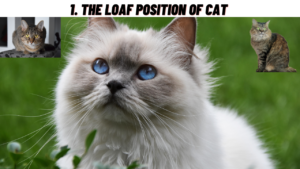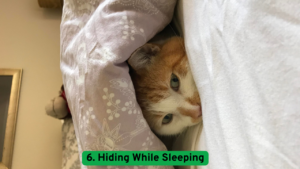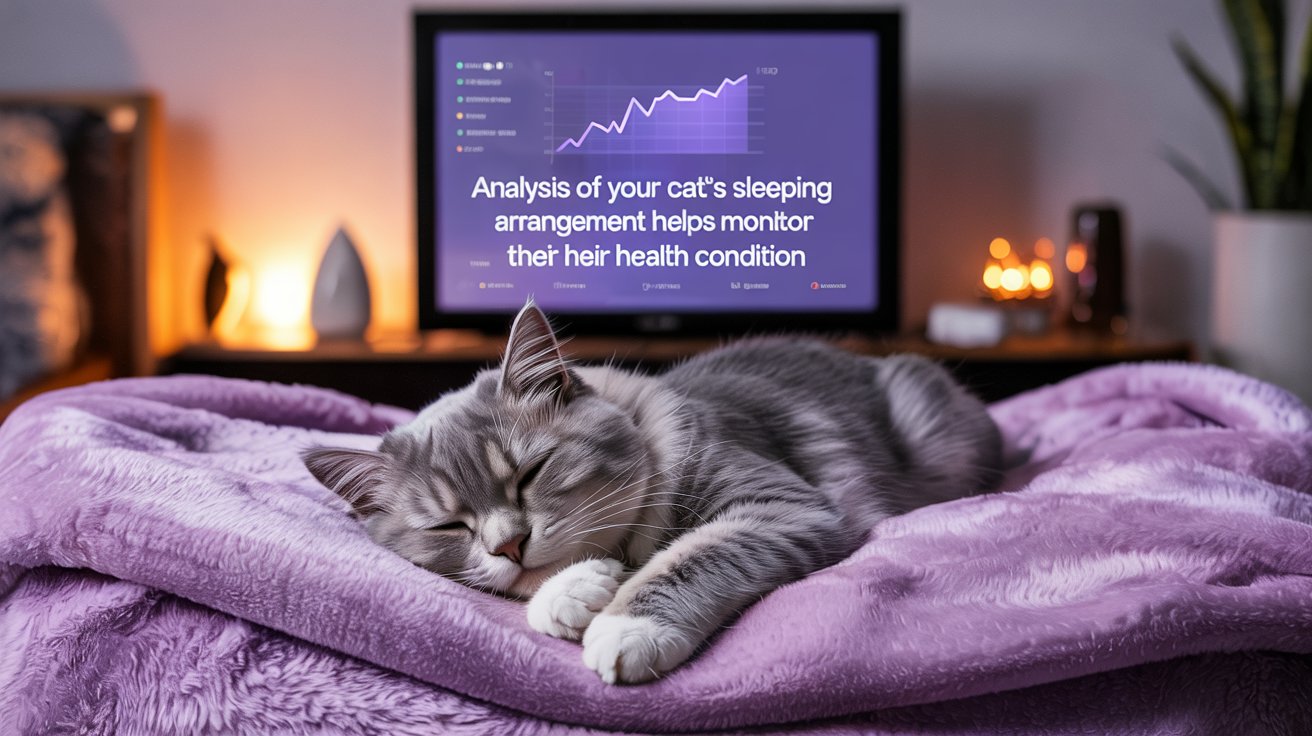Analysis of your cat’s sleeping, Cats sleep a lot. Typically cats rest from 12 up to 16 hours daily. The appearnce of laziness during sleep is actually typical for both humans and other animals. The restful periods ensure their health together with their alertness. The way a cat sleeps reveals important information about their physical condition.
You should observe the way your cat rests. The position of their body while sleeping reveals information about their current mood and comfort zone and their overall health condition. A detailed analysis follows about the significance of different sleeping positions.
1. The Loaf Position

The cat positions itself upright while tucking both paws under its body and shutting its eyes closed. The shape resembles a typical loaf. The loaf position describes this particular sleeping position.
The position indicates your cat currently feels emotionally protected. They stay semi-alert. They have an immediate response capability to fulfill unexpected situations. The sleeping behavior of healthy feline specimens includes this position. Extended loaf position sleep while showing signs of tension may indicate an alternative problem.
Look for signs of shallow breathing and stiffness as symptoms for further examination. The condition requires further examination since it indicates either pain or discomfort. Take your pet to see their physician when these symptoms appear to you.
2. Curled Up in a Ball

Overnight rest for numerous cats involves forming themselves into a dense circular shape. Their tails function as a defensive mechanism which circles around their physique. This is a natural position.
It helps conserve body heat. It also protects vital organs. Wild cats implement this position for both safety and warmth protection when they need it. The domestication process did not remove this instinct from house cats.
This position usually shows comfort. Check for alternative indicators when your cat continues with the curled-up position in a cozy environment. The cat’s state of well-being or the source of their anxiety cannot be determined. The combination of stress or stomach discomfort leads cats to wrap their bodies into protective positions.
4. Side Sleeping

Madrid cats remain in a relaxed state when they sleep on their side. The legs of these cats extend into full length while their heads lie absolutely flat on the surface. This is a deep-sleep position.
Cats use this resting position because they sense no threats. They don’t expect any threats. Regular side sleeping in cats indicates they have no health problems.
Onset side-sleeping habits together with heavy respiration patterns should be examined because these signs may point towards lung or heart health concerns. You must pay attention to abrupt changes in how your cat behaves.
5. Crouched with Eyes Half Open

This pose shows alertness. During apparent sleep your cat maintains a state of preparedness to act. Their muscles stay tense. Your cat usually revealed these behaviors through ear movements and sudden eye opening.
When uncertain or uneasy cats tend to use this specific position. It’s not a deep-sleep pose. Continuous extreme side-sleeping in cats can signal persistent stress.
When stress persists it causes the immune system to operate at a reduced level. It can lead to illness. Try to find the cause. Identify any recent noises as well as scents and other creatures that seem to disturb your feline friend.
6. Hiding While Sleeping

When anxious cats choose to conceal themselves under furniture and inside closets. That’s okay once in a while. Regular occurrences need your observation but occasional incidents should be ignored.
The act of hiding during sleep indicates possible distress from pain or fear. Sickness in cats tends to drive them toward dark areas where they can find peace. They isolate themselves.
This behavior needs attention. Cats who stay hidden in their sleeping position for multiple days should be examined for medical issues. Seek medical attention from a veterinarian so they can receive an examination.
7. Sleeping in Unusual Places

Your cat has begun to choose both bathroom tubs and floor surfaces for resting. They display signs of hotness when they rest in such positions. Ill cats typically look for cold surfaces because heat reduction helps their body temperature balance.
Feline illness including infections and high body temperature lead to this behavioral pattern. The medical condition may point to kidney dysfunction. Keep an eye out for vomiting as well as decreased appetite when observing your cat.
8. Frequent Position Changes

Regular sleep patterns for healthy cats include moving bodies throughout their rest period. That’s normal. Restlessness together with changes in position helps maintain flexibility while improving blood flow.
Joint pain may be present when your cat continues to change sleeping positions or makes noticeable noises during rest. Arthritis can cause this. Senior cats are more at risk.
Your veterinarian should evaluate your cat when they appear uneasy during their sleep periods. The experiences of early treatment help minimize their distress.
The way your cat rests its body provides essential clues about their state. The way your cat rests reveals their contentment alongside their mental state and occasionally indicates their health condition.
Learn their habits. Watch for changes. A sudden change in sleeping position indicates either sickness or pain in your cat.
Don’t ignore your instincts. You should contact your veterinarian whenever you sense unusual behavior. Cats hide pain well. Their bodies present several signs even though they attempt to conceal their real condition.
Why is my cat's sleeping position important for their health?
Certain sleeping positions can indicate discomfort, pain, or underlying health issues.
How many hours a day should a healthy cat sleep?
Adult cats typically sleep 12–16 hours a day, while kittens and seniors may sleep even more.
What does it mean if my cat suddenly changes its sleeping spot?
A sudden change could indicate stress, discomfort, or illness and may warrant closer observation.
Is it normal for my cat to sleep in strange or hidden places?
Cats may seek hidden spots when they feel unwell or stressed—monitor for other unusual behavior.
Can sleeping too much be a sign of illness in cats?
Yes. While cats sleep a lot, excessive sleepiness combined with low energy may suggest health concerns.
What are signs of a comfortable and healthy cat while sleeping?
Relaxed posture, gentle breathing, and consistent sleeping locations suggest your cat feels safe and healthy.
Should I worry if my cat sleeps in the litter box?
Yes. This can be a sign of a urinary issue, stress, or discomfort—consult a vet immediately.
How can I track my cat’s sleep to monitor its health?
Keep a log of sleeping hours, positions, and locations. Any major changes can help your vet diagnose issues.
